The Subtle Art of Pausing
Phillip Burton Wilderness, Point Reyes, California
The confluence of the holiday season, yearend, and dark, quiet winter days prompts my very being to want to break form and press pause on the forward-leaning momentum of everyday life. I invite this pause. But not all pauses in my life are as easy.
Easy or not, gaining the skills to recognize when a pause is needed — and initiate that pause — is key to healing our relationship with food and ourselves. Kneaded dough requires time to rest so it's more malleable for rolling out and shaping. We are more malleable after a pause; we’re calmer and more rested, rational, and settled in ourselves.
For my clients, pausing often comes by way of acknowledging their inner world, such as:
the unsettled energy in their body
the dysregulated state of their nervous system
that old wound that's being triggered
feelings of disappointment, neglect, or anger they would have once dismissed
However, pausing - in whatever form it takes - is not always the comfortable or instinctive thing to do. Consider these situations: putting the fork down between bites; stepping away from a heated argument; or setting down a work project when you've hit a wall even though you're on tight deadline.
Humans are resistant to "being with" — or pausing around — something uncomfortable. We make the inaction mean we're giving up or we're lazy, complacent, or resigned. This makes sense. In a society with a strong bias toward action, we haven't had opportunity to build capacity for sitting with discomfort or safely experience the benefits of doing so (hence behavioral food therapy!).
When we do acknowledge the unsettledness inside of us, it's then doubly enticing to act on the urge to immediately “fix it”. But sometimes there is no solution in the moment. There's no quick fix. We have to be with the unsettledness - to pause to acknowledge and allow the discomfort so that we can more consciously choose how to move forward with it.
“Kneaded dough requires time to rest so it’s more malleable for rolling out and shaping. We are more malleable after a pause; we’re calmer and more rested, rational, and settled in ourselves.”
Clients often ask me: What do I DO to pause? It might be action-oriented like a quick body scan, meditation, a power nap, a walk outside, or a tea break. But it's more often the subtle, silent head nod of acknowledgment we offer to our inner world and the parts inside of us that are struggling that will better equip us to ease the emotional or compulsive eating cycle.
So, what does this subtle, silent pause look like in real life? And how can we make this pause mean something that is more palatable and hopeful than complacency?
The subtle, silent pause might look like:
Acknowledging what's uncomfortable
Setting aside time to process and express the discomfort through movement, writing, art, or vulnerability with a safe person
Setting the discomfort/unsettledness down and stepping away from it for the moment, day, week, etc.
Not making the stepping away mean anything about what you do tomorrow, only that you're honoring what you need to do today
Intentional distraction: choosing to set it aside and nurture that part of you needing the support by allowing play, fun, levity, and pleasure to enter into your orbit
Trusting process: recognizing that pausing allows distance, space, intentional distraction, and quiet, which in turn allows the nervous system to settle and generates perspective and renewed energy
Honoring truth: making room for the reality that you've felt depleted, overwhelmed, or emotionally wrung out and you need restorative time to tend to yourself
Susie Lake at sunrise, Desolation Wilderness


